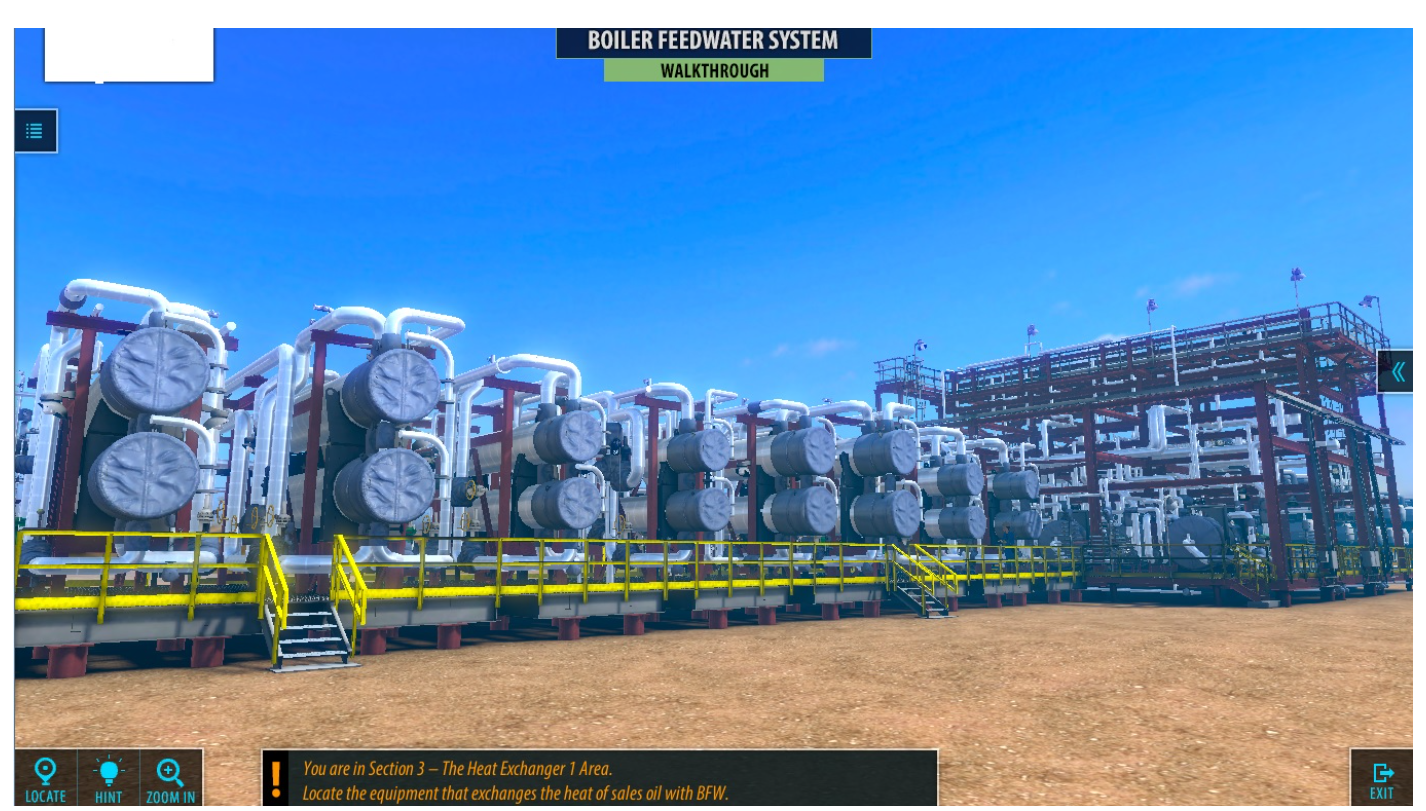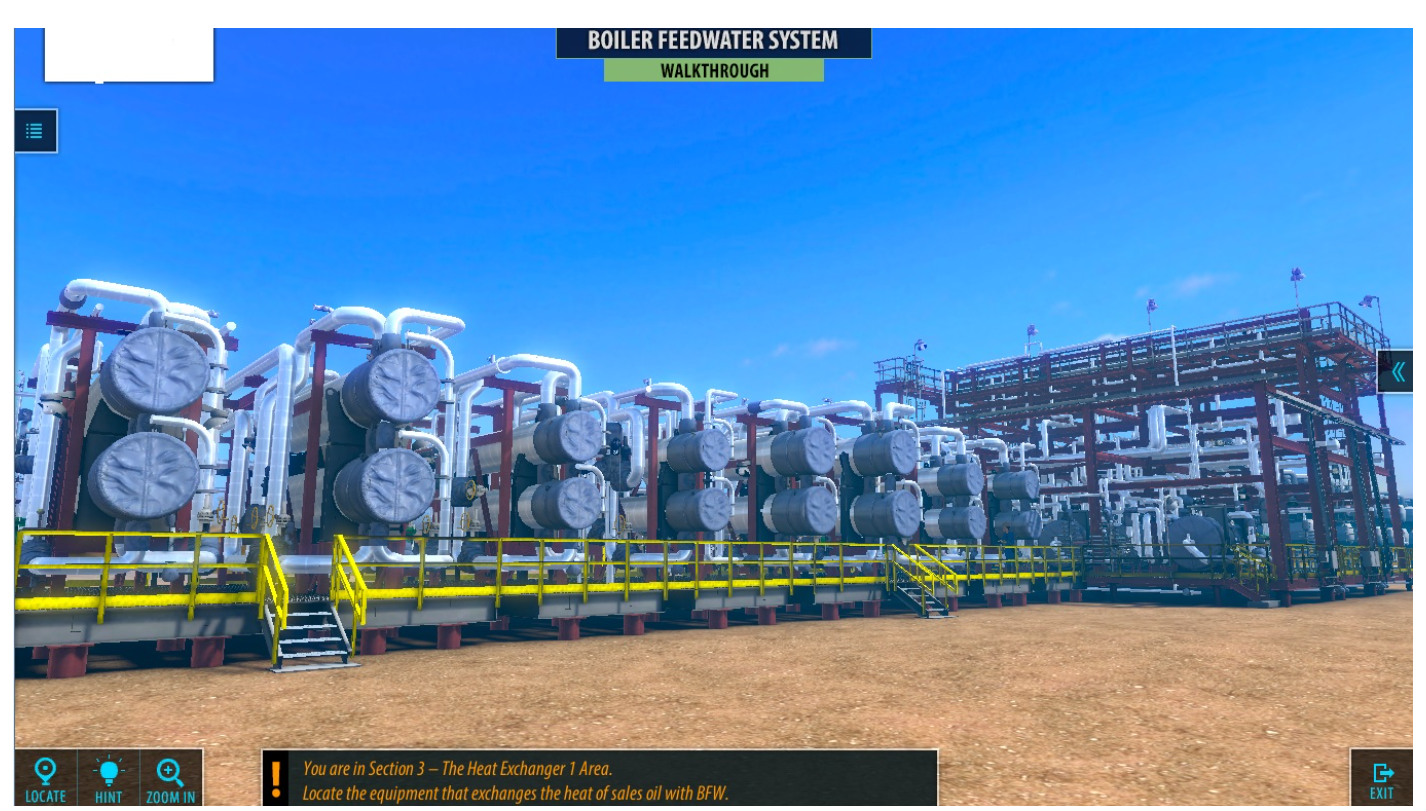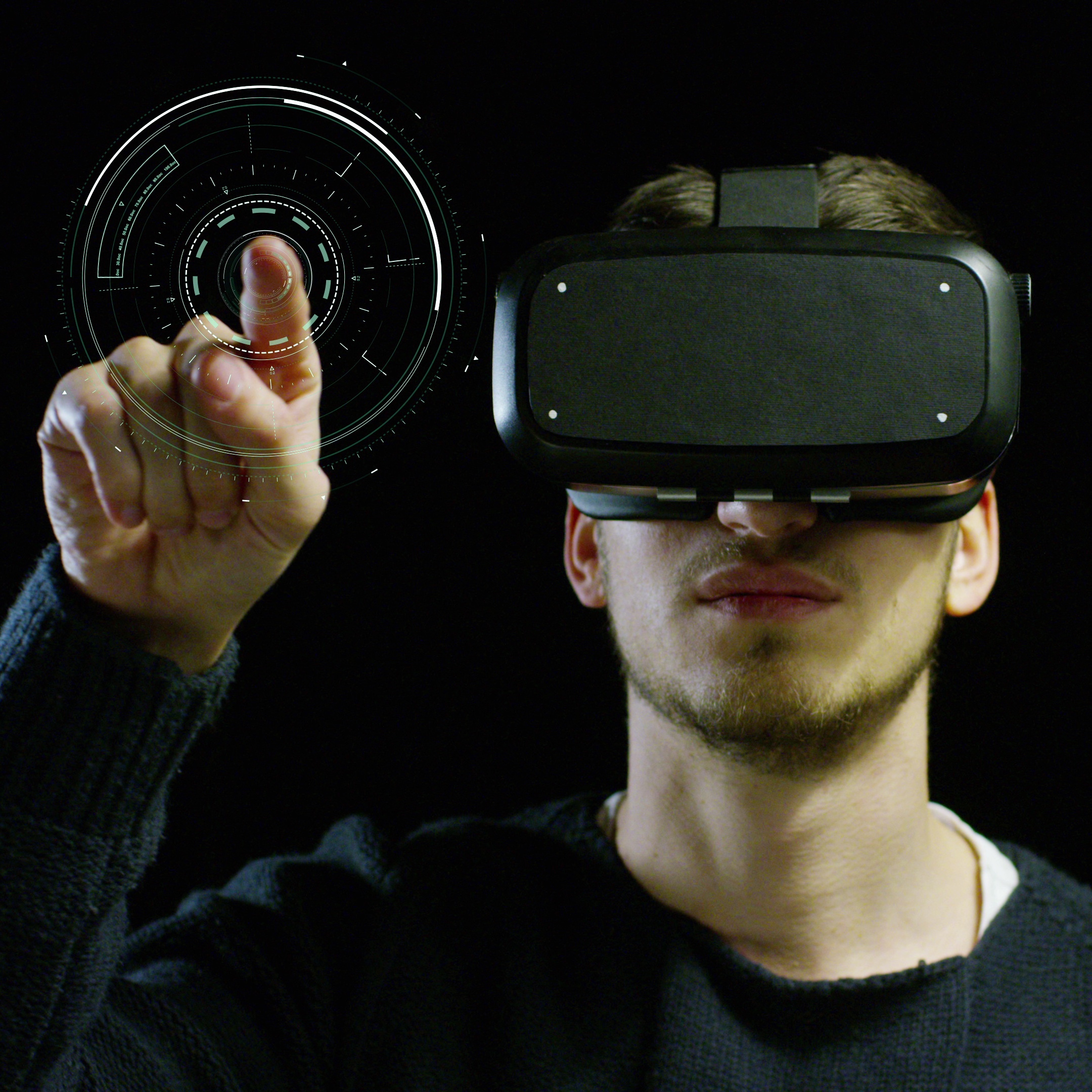6 Advanced Technologies Revolutionizing Learning Experience Centers
If you’ve got kids, nieces, or nephews in high school or university, you may have noticed they’re much less stressed than we were when missing a crucial lecture. As an educator, you know this is because students now receive notes via email. All students—including those present—likely receive a digital version of the notes made in class. Smart boards have become a staple of today’s learning experience.
Studies show that 222,155 (14.9%) smart classrooms in India as of 2022 were equipped with either smart boards, smart TVs, or some form of virtual accessibility. In the US, nearly 60% of students reported using a whiteboard in 2018—numbers that have probably escalated significantly since, especially with the pandemic accelerating the digitization and modernization of schools. The conveniences offered by technology adopted during lockdowns have ensured their continued use.
However, the concept of Learning Experience Centers is now reserved for more than just school and university students. Classrooms are also part of the business world, integrating technologies like Virtual Reality in education and Augmented Reality learning.
US companies invested $101.8 billion in training expenditures last year, according to the Training Industry Report 2023. Moreover, Statista’s data for 2023 shows that small, medium, and large companies invested in L&D programs as follows:
- Small companies (100-999 employees) spent roughly $1,420 per learner.
- Midsize companies (1,000-9,999 employees) spent $751 per learner.
- Large companies (over 10,000 employees) spent $481 per learner.
If you spend heavily on training, you better get a corresponding bang for your buck. That means optimizing business learning outcomes like subject matter retention and on-the-job applicability through technologies such as Artificial Intelligence in classrooms and the Internet of Things in education.
In this blog, we’re talking to educators and L&D professionals about how modern technology, which has various business functions, can also be applied to student-based learning and business-focused learning experiences.
1. Virtual Reality (VR) tools
What is VR?
Virtual reality (VR) is a technology that creates an artificial environment that users can explore and interact with through a VR headset. This headset immerses the viewer in a 360-degree virtual setting and is often accompanied by controllers that allow the viewer to navigate and manipulate the environment. VR offers immersive experiences that simulate real-life settings, making it a valuable educational tool.
Classroom Application
Virtual reality in education is being used to take students on virtual field trips to different parts of the world from their classrooms. For example, platforms like Google Arts & Culture provide virtual tours of museums, historical sites, and natural wonders, turning abstract concepts into nearly real experiences. In a biology class, Google Arts & Culture can take students on virtual field trips to explore various environments, habitats, and lifeforms, making the learning experience more hands-on and, consequently, easier to understand and remember.
Business Learning Application
In the business context, VR can be used to train factory workers on the operation of expensive equipment and high-risk environments without the real-world consequences of making errors. This allows for hands-on learning in a no-risk setting, improving subject matter retention and practical skills. For instance, VR simulations can teach workers about safety protocols and machinery operation, enhancing their readiness for actual work environments.
2. Augmented Reality (AR)
What is AR?
Augmented reality (AR) overlays digital information in the real world, turning abstract ideas into something you can see right in front of you. You already know how AR allows you to see what a new piece of furniture will look like in your living room, and you’ve probably tried on a watch or glasses or makeup using AR try-ons that are becoming increasingly popular, so you can imagine how this technology might play out in a learning environment.
Some argue that AR is less immersive than VR, but it has its positives. For example, unlike VR, AR does not require expensive headsets; it can be accessed using mobile devices or tablets. This technology makes learning immersive and captivating, allowing students to explore subjects in ways that were once unimaginable.
Classroom Application
Augmented Reality learning tools like Zappar bring historical events to life by allowing students to interact with 3D models of ancient artifacts or famous landmarks. This makes learning about history, art, and science more engaging and tangible. For example, students can scan images of historical sites with their devices to see animated reconstructions and gain deeper insights into the past.
Business Learning Application
In the business world, AR can be used to scan production line appliances and receive real-time data on their correct use, safety precautions, risk factors, and maintenance schedule. This application of AR enhances on-the-job training efficiency. It ensures that employees have access to critical information when they need it (rather than only during the training period), thereby reducing errors and improving overall productivity.
3. Gamification
What is Gamification?
Gamification in education involves integrating game-like elements into non-game contexts to make learning entertaining and interactive. It encourages students to actively engage with the material in a way that feels more like play than work.
More than 90% of children older than 2 years play video games, and three-quarters of American households own a video game console, according to 2023 data. Children aged 8 to 17 spend an average of 1.5 to 2 hours daily playing video games. Historically, educators agree that one of the best ways to engage a distracted class of students is to say, “Let’s play a game!”
Classroom Application
Today’s classrooms can leverage advanced gamification in education tools like Kahoot! and Classcraft to make learning fun and competitive:
- Kahoot: This tool turns quizzes into lively competitions. In a history class, for example, students race to answer questions, boosting engagement and knowledge retention through friendly competition.
- Classcraft: In language courses, Classcraft turns lessons into quests and challenges. Students earn points and rewards for completing tasks, motivating them to participate actively and making learning more enjoyable.
Business Application
Modern gamification tools aren’t just for classrooms. They can transform safety training and risk management sessions in the corporate world, making them more engaging and memorable. For instance, we enhanced safety training for one of our petroservices clients by gamifying the material. Imagine teaching safety protocols through interactive challenges and rewards, making the information stick better than traditional textbook methods. See a screenshot of one of the gamified elements below:

Evolving Gamification Technology
While gamification has existed for ages, the latest tools offer sophisticated features that reshape how we learn and train. Here are some cutting-edge tools to consider:
- Bunchball Nitro: This platform provides a comprehensive suite of gamification solutions for employee engagement and customer loyalty programs. It offers customizable challenges, leaderboards, and reward systems.
- EdApp: A mobile learning platform that incorporates gamification to enhance microlearning. It features interactive templates, quizzes, and leaderboards to keep learners motivated.
- Quizizz: An engaging tool for both classrooms and corporate training, Quizizz allows users to create and participate in interactive quizzes, with real-time feedback and gamified elements to boost participation.
Educators and businesses can use these advanced tools to create more engaging, interactive, and effective learning experiences, ensuring better knowledge retention and motivation.

4. 3D Printing
What is 3D Printing?
3D printing, or additive manufacturing, is a process of creating three-dimensional objects from their digital versions. This is achieved by “printing” layer-upon-layer of material until the whole object is created. Upon closely examining a 3D-printed object, these layers are fairly visible as fine lines.
Classroom Application
3D printing in learning is particularly beneficial for students in architecture, resistant materials, and engineering courses, allowing them to create prototypes and models for their projects. Science students can print molecules and models to enhance their understanding. Geology and anthropology students can produce and interact with models of fossils and artifacts, while organic chemistry students can print complex proteins and molecular structures.
3D printing tool in focus: MakerBot SKETCH Classroom
The MakerBot SKETCH Classroom is specifically designed to integrate 3D printing into STEAM classes. This affordable solution includes the following:
- Two-printer bundle: This bundle includes all necessary 3D printing materials, including six spools of filament, four build plates, two spatulas, and two snips.
- ISTE-aligned certifications: Instructors can familiarize themselves with the platform through a self-paced learning guide and earn certifications aligned with the International Society for Technology in Education standards.
- MakerBot CloudPrint platform: This web-based platform allows students to create 3D designs from anywhere and send them to their preferred printers. Teachers can assign work for students to complete at home, and their prints will be ready when they arrive at school the next day.
Using this multi-printer solution, integrating 3D printing into regular hands-on lessons becomes easier and more cost-effective, enhancing the learning experience in science and design courses.
Business Learning Application
In the business context, a 3D printer might become relevant when learnings need to be shared with senior stakeholders, like when you need to explain some complex invention to an investor or to a board of directors. If you can display a prototype, you might be able to offer deeper insights, describe features better, and improve chances of obtaining sign-off.
We at magineu have used a 3D printer, for example, to create a scale model of a production facility that would then become the display surface for a projection mapping exhibit that would depict steel production. The “learners” in this context were would-be customers of the steel production company.
5. Smart Boards
What is a Smart Board?
A smart board is a large interactive display board resembling a whiteboard. It can function as a standalone touchscreen computer, allowing independent task execution and operations. Smart boards enable students to participate both remotely and in person, with live sessions that can be recorded for later viewing. Lessons can be launched just like opening a file on your computer. This shifts the focus from manually writing notes to discussing subjects and hosting interactive activities like quizzes.
Classroom Benefits
Smart boards offer numerous advantages in educational settings:
- No Missed Resources: Absentees can access all resources shared in the classroom.
- Efficiency: Teachers can use the same lesson across multiple classrooms, saving time.
- Increased Engagement: Teachers can face the class more often, enhancing interaction.
Business Learning Benefits
In corporate training, smart boards provide significant benefits:
- Flexibility: Sessions can be recorded and viewed later, accommodating busy schedules.
- Wider Reach: Training sessions can include participants from different branches or geographies, especially those in the same time zone.
Smartboard brand in focus: ViewSonic
ViewSonic‘s ViewBoards and myViewBoard software suite provide interactive tools for physical and hybrid classrooms. Read this case study about a school in the UAE that switched to smartboards initially as a pandemic response but also saw benefits that lasted far beyond that.
6. Learning Management Systems (LMS)
What is an LMS?
Learning Management Systems are advanced platforms that complement smart boards by providing a comprehensive, organized space for all educational activities. LMS platforms like Canvas and Blackboard offer all-in-one solutions for managing instructional content, assessments, and communication, creating a virtual command center for schools.
Advanced LMS Options for Schools
LMS platforms such as Canvas and Blackboard are designed to integrate seamlessly with smart boards and other digital tools. They offer:
- Centralized Hub: Teachers can upload course materials, including lecture notes, readings, assignments, and multimedia content, creating a centralized repository accessible anytime, anywhere.
- Interactive Features: Discussion boards, quizzes, and collaborative projects enable students to engage actively with the material and each other, fostering a more interactive learning environment.
- Tracking and Analytics: These systems help teachers monitor student progress, identify struggling areas, and personalize learning by tailoring assignments and resources to individual needs.
Classroom and Business Learning Applications
LMS platforms support both classroom and business learning in several ways:
- Continuous Access: Students who miss classes can log into the LMS to access the day’s lessons, assignments, and recorded lectures, ensuring they stay up-to-date with their coursework.
- Collaboration: Discussion boards and collaborative tools allow students to share ideas, ask questions, and collaborate on projects outside of class hours.
- Teacher Support: Teachers can track student progress, provide timely feedback, and adjust learning materials to meet individual student needs better, contributing to a more enriched and inclusive learning experience.
LMS Platforms in focus:
- Canvas offers a user-friendly interface, robust analytics, and integration with various digital tools to enhance teaching and learning experiences.
- Blackboard: Provides comprehensive tools for course management, including content creation, assessment, and communication features that support interactive and engaging learning environments.
Improving learning outcomes has always been challenging.
These advanced technologies and the associated tools represent exactly what education and corporate training have been missing in the past. That said, we need to underscore a few things before we close this discussion: Technology in educational institutions shouldn’t just be applied; it should be integrated thoughtfully. Institutions must train teachers on utilizing these tools and also encourage them to share ideas on how they use the tools to reduce workload and improve efficiency.
In business learning, facilitators are essential for ensuring proper utilization and maximum uptake, especially with new tech like Virtual Reality in education and Augmented Reality learning. Even though this technology is often designed to be intuitive, having a facilitator on standby can prevent any frustration or incorrect use that might damage the device.
Before investing in new technology, consider the ROI and prepare to provide the necessary support to achieve it. Change can be met with resistance, and employees may be afraid of damaging expensive technology. Proper training and support can alleviate these concerns and encourage adoption.
Last but not least, always stay updated with new technology and solutions, as well as news about learning experience centers — when it comes to tech, the earlier you invest, the longer you can enjoy your devices before they become redundant and are replaced by something newer, faster, more accurate and more efficient.
Suppose you’re looking to elevate your educational or business learning environment. In that case, magineu can help you identify the right technology, develop a training plan for facilitators and users, and support you with maintenance and upgrades. Contact us today to modernize your educational institution or business learning center.



